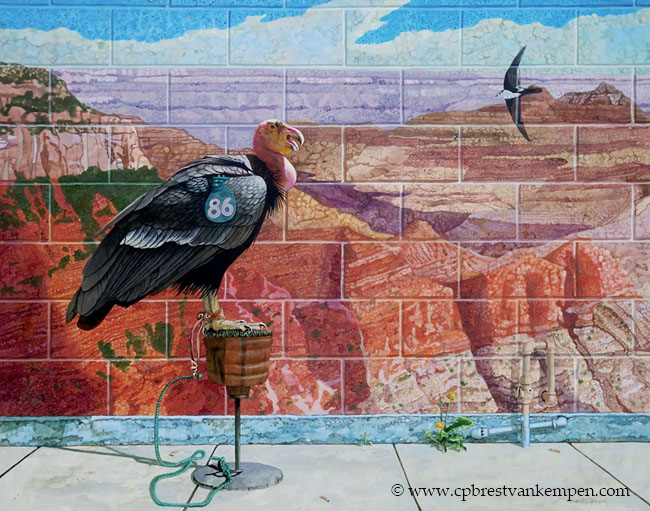acrylic on illustration board 24” x 30” $18,000. Giant condors thrived in North America during the Pleistocene, but began to decline about 13,000 years ago. By the time Christopher Columbus was born, just a single species remained, the California Condor (Gymnogyps californianus), with a small population restricted to the southwestern tenth of the continent (although they often wandered outside of their breeding area in search for food). The Human population boom of the 20th Century reduced condor numbers further, nearly wiping them out. By the 1980s, a mere 22 individuals survived, and the bold decision to take the entire population into captivity was made. The captive propagation program has been far more successful than most of us ever expected, increasing the population to nearly 500 today. Almost half of these birds have been released and lead semi-wild lives in California, Arizona and Utah. The species is still far from recovered, though, and is continually dependent on human management. The mortality rate, mostly from power-line collisions and lead bullet ingestion, still exceeds wild births. Reintroduced condors show problematic behavior like extreme tameness, and lead poisoning has caused most of the Arizona birds to be re-trapped for chelation therapy. |
